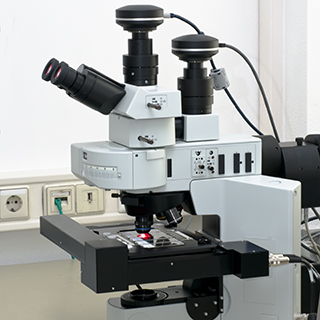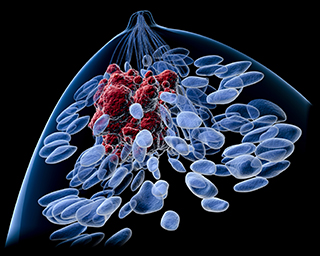There are several different ways to classify types of breast cancer, and the way that a case of cancer is described can incorporate several of these classifications. For example, a triple-negative case of invasive lobular carcinoma includes classifications for the hormone receptivity of the cancer cells (“triple-negative”), the invasiveness of the cancer (“invasive”), the location of the cells (“lobular”), and the origin of the cells (“carcinoma”). Understanding the different types of breast cancer can help you make educated choices about your treatment options.
Cancer Origins and Invasiveness

Biopsied tissue is examined under a microscope to determine whether cancer is present, as well as to find out more about the cancer’s origins and invasiveness. Most breast cancers are carcinoma, which means that they develop from epithelial cells. Cancer can also be labeled “sarcoma,” which means that it originated in non-epithelial cells, but this is rare for breast cancer.
Cancer is also categorized based on whether it is invasive, which means that it usually “invades” or spreads outside of the milk lobules or ducts. Breast cancer usually originates in the milk lobules or ducts, but non-invasive breast cancer rarely metastasizes beyond them. The phrase “in situ” means that the cancer is non-invasive or pre-invasive (it has not yet spread to the rest of the tissue).
Cell Location

Breast cancer is also categorized based on where the cancer cells are located within the breast. The cancer cells in ductal carcinoma are located in the milk ducts, the cancer cells in lobular carcinoma are located in the milk-producing glands, which are called lobes. Lobular carcinoma is often more difficult to detect by mammogram than ductal carcinoma.
Hormone Receptors

You can also classify a breast cancer based on which hormone receptors it has. Two hormones often promote the growth of breast cancer cells: estrogen and progesterone. Normal breast cells contain hormone receptors that attach to both of these hormones, and some breast cancer cells do as well. Cells that contain at least one of these hormone receptors are called “receptor positive.”
In addition, about 1 in every five breast cancers have increased levels of a protein called HER2/neu that promotes cell growth. These cancers are called “HER2 positive,” and can be treated with drugs that target HER2.
Doctors examine breast cancer cells to determine whether they have receptors for estrogen, progesterone, or HER2/neu. Based on their findings, they decide on the type of treatment that will be most successful. If a cancer has none of these receptors, it is said to be “triple negative,” and cannot be treated with therapies that target HER2, estrogen, or progesterone. Triple negative cancer has fewer treatment options, although it can still be treated with chemotherapy. Triple negative cancer also tends to grow more quickly than other cancers.
Less Common Types of Breast Cancer
Other, less common types of breast cancer include the following:
- Inflammatory breast cancer, which leaves the breast skin looking red and warm, and often with the texture of an orange peel
- Paget disease of the nipple, which leaves the skin of the nipple and areola red or crusted, possibly secreting blood or other liquid
- Phyllodes tumor, which develops in the connective tissue, or stroma, of the breast, rather than in the milk ducts or lobules
- Angiocarcinoma, which originates in the cells lining blood vessels or lymph vessels.
Keywords: breast cancer, hormone receptors, types of breast cancer, triple negative
